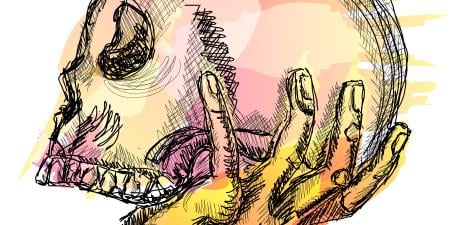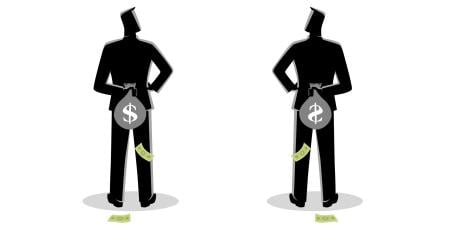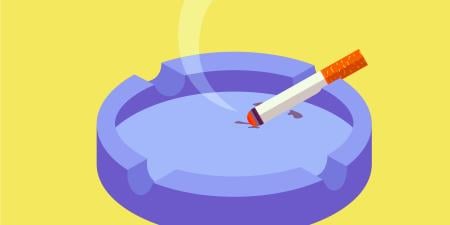The United States began with acts of civil disobedience. What dwindling moral footing the nation holds in the world today stems in large part from its beating back an axis of fascist and totalitarian regimes 65 years ago, followed two decades later by its now hallowed civil rights protests that tore away a layer of domestic injustice. Yet because this great tradition exists does not mean that physicians are free to fully engage in it. Our profession is a civil construct, an invention created by a patchwork of state and federal laws. When we engage in acts of civil disobedience we must realize that we challenge the government and the society which grants us our right to practice medicine. Whether a physician fancies herself a member of the Green Party or the Tea Party, she must obey our government’s rules, and be extremely diligent in those increasingly rare instances when she feels herself compelled not to do so.
When we do not choose our battles carefully, disaster can ensue, for the profession as a whole and for ourselves very personally. In February 2011 the Wisconsin state capitol was convulsed by massive protests staged by government employees, most notably its public school teachers, who were outraged over the governor’s push to revoke certain collective bargaining rights, including their power to negotiate for better health insurance. Members of the University of Wisconsin’s Department of Family Medicine, including both residents and attending physicians, felt compassion for the educators’ cause, and wanted to participate in the display, but rather than symbolically protest in the streets alongside the teachers, they decided to perform an act of civil disobedience: the doctors wrote out fake sick notes for the teachers, many of whom were falsely using illness as an excuse to attend the protests, and risked firing by doing so.
The execution of this particular act of civil disobedience was telling—and typical of the problems physicians face when they venture into public protest. When made public, civil disobedience is in fact a media act: reporting is the primary venue through which communication of meaning occurs. Engagement with the fourth estate is a skill for which most physicians will find themselves ill-prepared. While in the midst of writing their excuses, the Wisconsin family medicine doctors appeared caught off-guard when peppered with questions by everyone from the Associated Press to freelance videographers. Associate Professor Lou Sanner implausibly claimed his prescriptions were for “stress” that he diagnosed only after forming an adequate doctor-patient relationship in the midst of all the hustle and bustle. Another doctor said she was writing the excuses to support the teachers’ mental health. The messages and the acts didn’t mesh. It doesn’t take an MD to know these doctors were playing the system in service of ulterior motives, and not a single reporter present missed the red flags of incredulity.
While acknowledging the motivations of the physicians concerned as generally wholesome, the Wisconsin Medical Society had no choice but to condemn these public acts as violating a sacred trust between society and doctors. Referencing Dr. Sanner’s comments in particular, the society stated that the patient-physician relationship is a cornerstone of high-quality health care and that “important elements of that relationship, such as conducting proper medical evaluations of patients, should not be taken lightly” [1]. The Wisconsin Medical Society understood what the protesting physicians did not: the high regard with which the public holds the medical profession is not a given. It can be lowered.
Why is the medical profession respected? Why is it intrinsically meaningful when doctors have something to say? What is that added meaning? Understanding the answers to these questions is essential to gaining an accurate sense of the boundaries of our behaviors within social and political spheres, including public protest. Public regard for the medical profession is the residuum of daily patient-physician encounters, especially in those times when a patient trusts in our integrity, is soothed by our knowledge, and accepts our honest, calm, and methodical approach when we reach our individual professional limitations.
The Wisconsin doctors’ actions threatened this standing, and the profession is punishing them for their breach. To date the University of Wisconsin School of Medicine has privately censured at least 12 of the doctors they employ, and the Wisconsin Medical Examining Board may take further action when it reviews the results of formal investigations into eight of the physicians undertaken by the state’s Department of Safety and Professional Services [2]. The doctors’ best defense may be the fact that we cannot practice good medicine without taking into account social factors beyond a diagnosis; I would not condemn the considered decision of a fellow physician made in the privacy of her own clinic room, who decided to grant a single work excuse for a preponderance of social needs. Our social welfare and our health are inextricably linked. But the same transaction, carried out in public view, time and again, without any plausible doctor-physician relationship necessary to make such a determination, deserves no such collegial deference. Indeed I criticized the Wisconsin doctors before a national audience on the website of The Atlantic magazine [3].
We have the right to be political actors in this country; doctors are citizens too, but we must understand that the profession is itself a legal construct created for the purpose of improving public well-being. There are other ways to maintain the collective health than by authorizing a single profession with all the rights and privileges physicians still enjoy in today’s health care system. We will see our profession erode away through the democratic process if we undermine its standing. The quickest way to that end is abusing the public’s understanding of the physician narrative. The physician narrative is the default credibility we are given by doing nothing more than entering the profession— it is that collection of concepts, generally positive, that people think they know about us the moment they learn that we are doctors. We trade on it to do our jobs. We also trade on it in when we advocate for any issue we believe in.
With a medical degree comes the fact that whatever you have to say in the domain of public discourse will be interpreted through the lens of your connection to the medical profession. This truth applies to medical students as well. In my early 20s I took my tendency to speak my mind to a new level when I started evangelizing my personal spiritual views on a web site I designed about philosophy and religion. While in medical school I decided to try my hand at sparking local discussion groups about my ideas around the country, beginning with a group in my own city. While my activities had nothing to do with my chosen career, my medical identity, such as it was, proved too powerful a narrative for journalists to resist. Headlines like “Medical student prescribes a religion,” which appeared in The San Diego Union-Tribune, reflected how little control I had over my own message [4]. I desperately wanted to create a movement that stood on its own, but just as interesting to the people who wrote about my work was the fact that the man at the center was about to be a doctor. My career path made a rather eccentric extracurricular activity seem less fringe, more legitimate, and more worthy of the continued attention of the reporters who kept on writing for the 3 years my little escapade lasted.
Whenever we do something for the consumption of reporters, we are trading on the same factor that makes that headline “Doctor Arrested for DUI” of interest to the local paper. Mr. Smith probably would not have earned the headline, but Dr. Smith did. When we engage with the media, we are tangling with a force that does not share our professional interests. Is what you have to say worth the loss of dignity to your profession? What do you hope to achieve? If your goal is important enough, and if you intend to pursue it at great personal cost, your activities will likely also pose a risk to the mission of medicine and the work of physicians. In that case you should consider leaving medicine behind to pursue your cause.
What about the committed doctor who intends to remain in the profession but advocate for a change, perhaps one related to the practice of medicine or the needs of patients? Understand that public protests are a general venue open to all, but doctors can never expect to be nameless faces in the crowd. They are always subject to being singled out and having their participation analyzed for its relationship to medicine. When Hollywood celebrities fly out to African refugee camps, or get themselves arrested in domestic protests, they lose their own narrative as well. They routinely insist they want the focus of attention to be on their cause, but their public identity as an actor or musician routinely proves too powerful for reporters to ignore: questions of motivation always follow. Were they seeking publicity? Were they trying to shape their own image by attaching their persona to a humanitarian cause? Doctors will similarly find their motivations questioned: the public, and the reporters who keep them informed, will always attempt to comprehend your actions in the context of the greater medical narrative.
The Wisconsin doctors weren’t smart about managing the narrative: their actions conflicted with the concepts of trust and integrity, exposing them to the charge that they used their professional power and privilege to support personal political interests. When the matter prompting protest is explicitly in a doctor’s personal financial interest, public protest is never the appropriate venue. Back in 2003, malpractice insurance rate spikes scared a group of surgeons at a Maryland public hospital who responded with threats of a work slowdown, prompting governor to meet with them [5]. The work slowdown never happened, and the state established a temporary fund to offset the rate increases by the state’s major malpractice insurer. Those rate hikes have since leveled off, and the political process of malpractice reform continues in the state through the usual channels. The state’s physicians did not need to threaten a work slowdown in order to get the governor’s attention—they were well capable of lobbying and petitioning political leaders en masse, advocating for the issue in ways that did not threaten patients [6]. They violated the medical narrative, and opened themselves to demeaning remarks like those delivered by the Maryland House Speaker, who said “It shouldn’t be about doctors. It shouldn’t be about lawyers. It should be about patients” [7].
Doctors in New Jersey actually went through with planned walkouts that year. The result? Eight years later malpractice reform is still working its way through the Garden State’s traditional channels. Not only does public protest (especially over issues of self-interest) threaten the standing of the medical profession, it’s typically an ineffective last-ditch strategy. Just ask Wisconsin teachers who are now working their first semester without a union contract and already paying more for health insurance [8]. Change in Wisconsin will happen at the ballot box, not in the streets.
Doctors have achieved their standing in society through the delivery of highly skilled services to those in dire need. When we engage in hotheaded public protest and civil disobedience, we must have a reason that rises to the level of endangering our ability to practice medicine at all, and a clear explanation for how our actions fit into the medical narrative we all share. If we do not manage our messages well, others will interpret our actions for us, and we cannot expect their version to be favorable.
References
-
Society: physician actions as reported unacceptable [news release]. Madison, WI: Wisconsin Medical Society; Feb 21, 2011. http://www.wisconsinmedicalsociety.org/publications_and_media/press_releases#pr_149. Accessed September 17, 2011.
-
Wahlberg D. UW not finished disciplining doctors who wrote sick notes for protesters. Wisconsin State Journal. August 28, 2011. http://host.madison.com/wsj/news/local/govt-and-politics/article_7ba0e3c6-d022-11e0-bd2d-001cc4c03286.html. Accessed September 17, 2011.
-
Vox F. Wisconsin’s real doctors and their fake sick notes for protesters. The Atlantic. February 21, 2011. http://www.theatlantic.com/national/archive/2011/02/wisconsins-real-doctors-and-their-fake-sick-notes-for-protesters/71500/. Accessed September 17, 2011.
-
Garrison G. Medical student prescribes a religion... for freethinkers on an “alternative” path. San Diego Union-Tribune. June 2, 2005. http://www.signonsandiego.com/uniontrib/20050602/news_lz1c02vox.html. Accessed September 17, 2011.
-
Salganik MW. Doctor insurer says malpractice rate increase not needed this year. Baltimore Sun. Aug 20, 2005. http://www.baltimoresun.com/news/maryland/bal-md.bz.malpractice20aug20,0,3109268.story. Accessed September 17, 2011.
-
Fiester A. Physicians and strikes: can a walkout over the malpractice crisis be ethically justified? Am J Bioethics. 2004;4(1):W12-W16.
-
Associated Press. Md. docs postpone surgery slowdown. Insurance Journal. October 6, 2004. http://www.insurancejournal.com/news/east/2004/10/06/46566.htm. Accessed September 17, 2011.
-
Richards E. Handbooks replace union contracts in Wisconsin schools. Milwaukee Journal Sentinel. Aug 13, 2011. http://www.jsonline.com/news/education/127669538.html. Accessed September 17, 2011.



